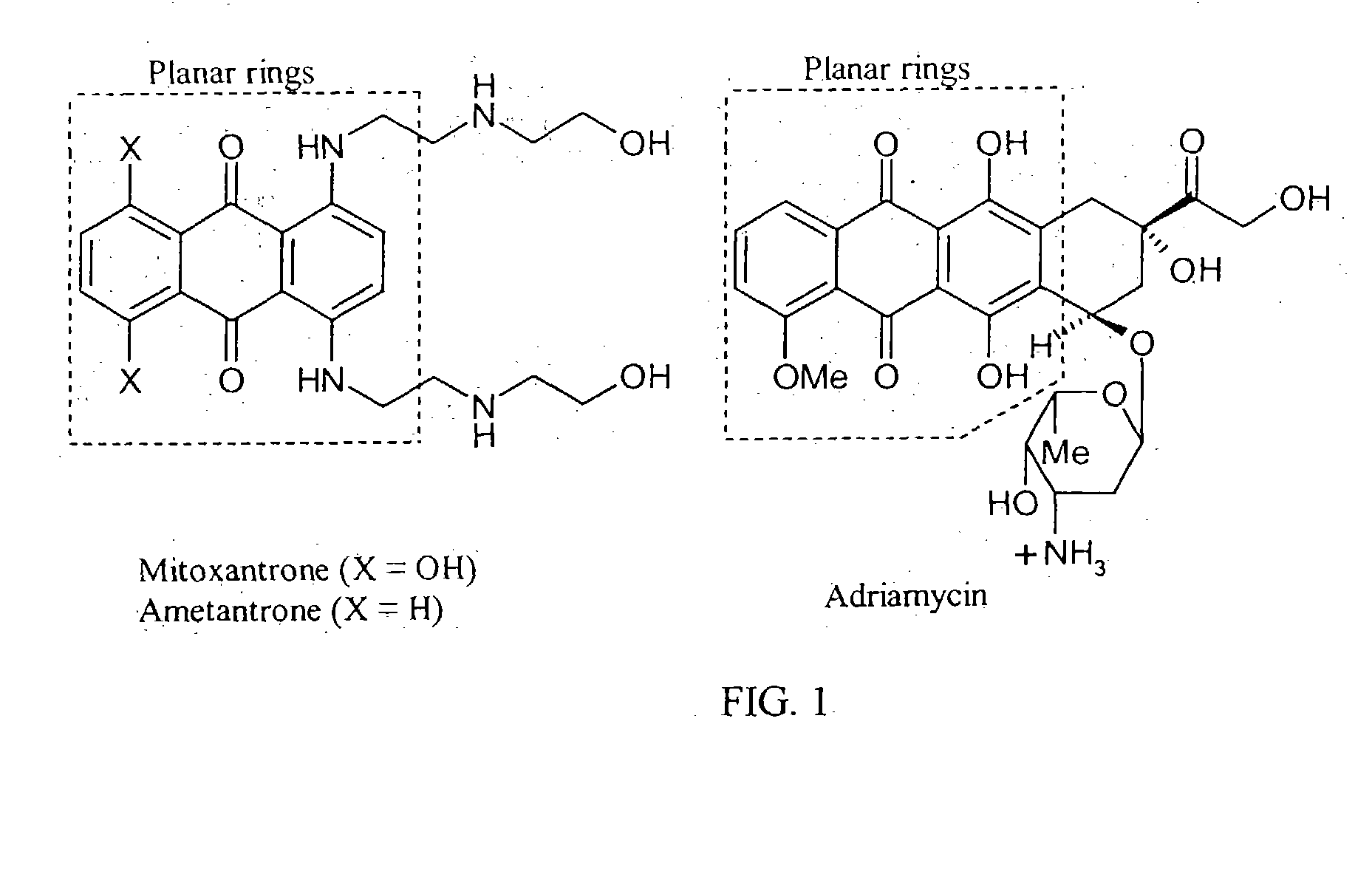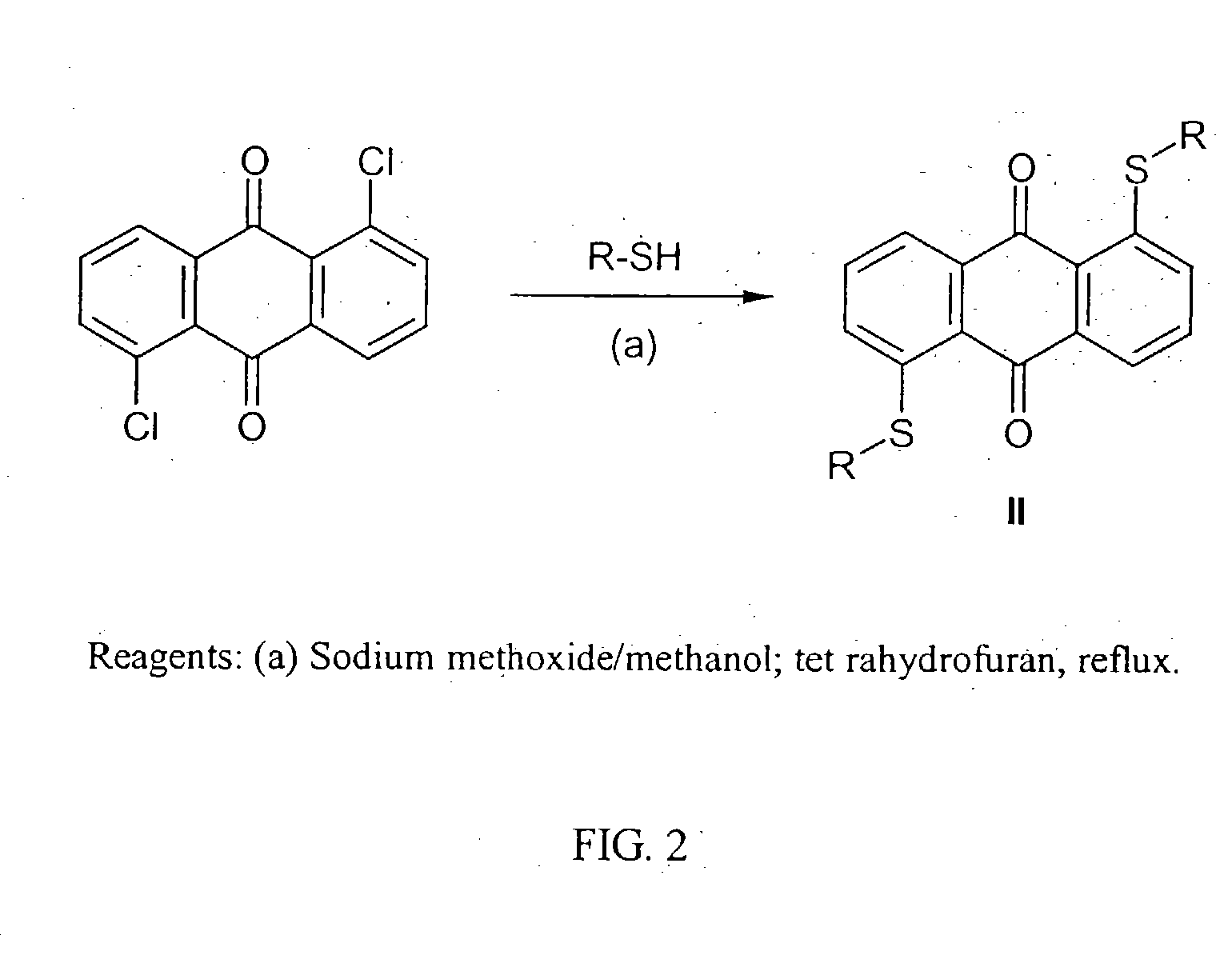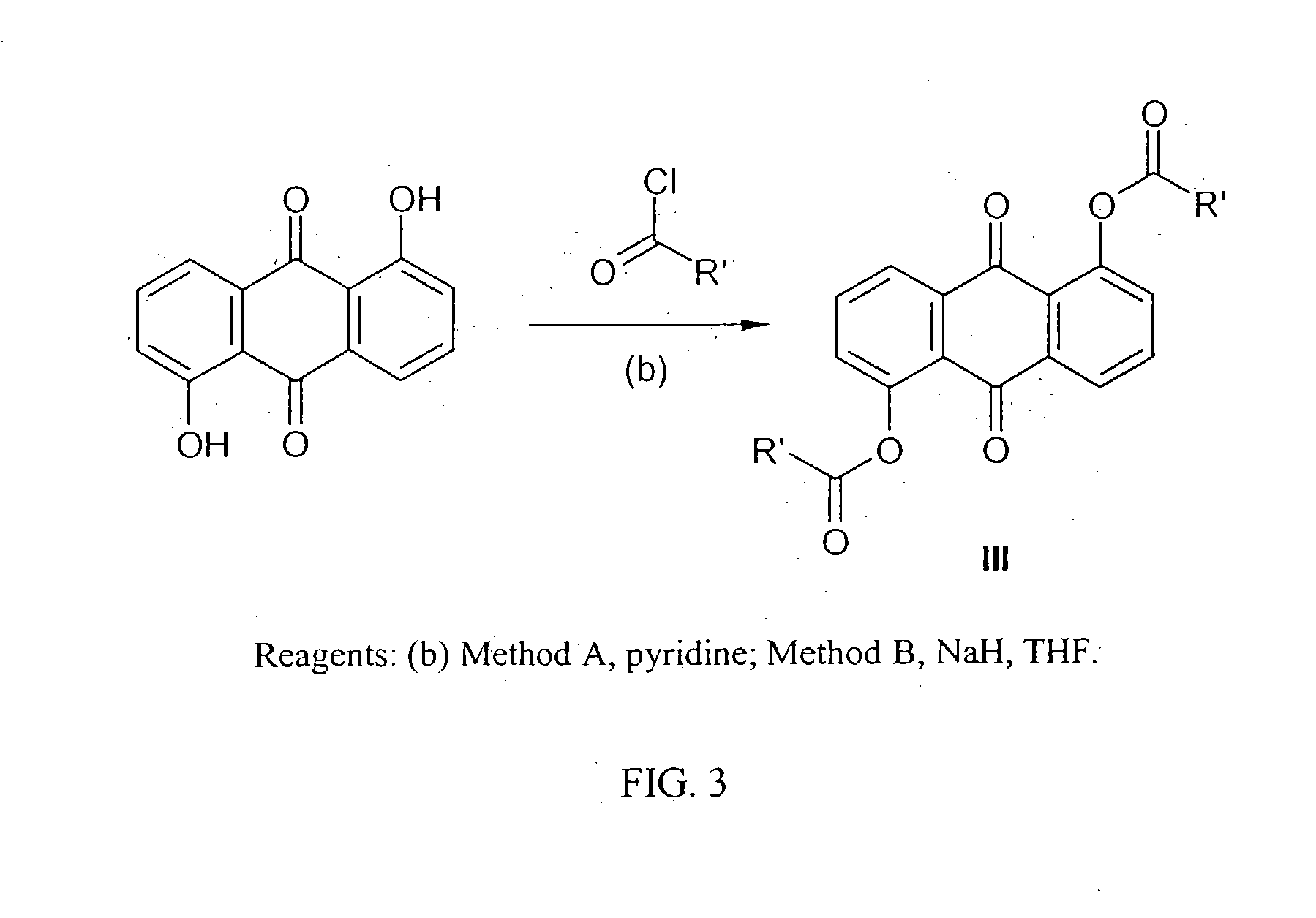Synthesis and pharmaceuticals of novel bis-substituted anthraquinone derivatives
a technology of bis-substituted anthraquinone and derivatives, which is applied in the field of novel anthraquinone compounds, can solve the problems of unceasable drug design of selective toxic drugs to tumors and not to the host organisms, and the mechanism of action is still unclear
- Summary
- Abstract
- Description
- Claims
- Application Information
AI Technical Summary
Benefits of technology
Problems solved by technology
Method used
Image
Examples
example 1
Methods of Synthesis
[0038] The novel bis-substituted anthraquinone compounds described in Table 1-4 were produced as follow.
[0039] General Procedure for the Preparation of 1,5-bis-thio-anthraquinones (II). To a solution of 1,5-dichloroanthraquinone (1.0 g, 3.6 mmol) in dry THF (100 ml) a solution of an appropriate thiols (28.8 mmol) in sodium methoxide (1.56 g, 28.8 mmol) and dry methanol (30 ml) under N2 was added dropwise. The reaction mixture was refluxed for 1 h. Water (250 ml) was added, and then the mixture was extracted with dichloromethane. The combined organic extracts were washed with water, dried (MgSO4), and concentrated. The resulting precipitate was collected by filtration, washed with water and further purified by chromatography and crystallization.
[0040] General procedure for the preparation of 1,5-bisacyloxy anthraquinones (III). Method A: To a solution of anthrarufin (4.25 mmol) and pyridine (20 ml) in dry CH2Cl2 (150 ml) was added dropwise a solution of an appr...
example 2
Structural Confirmation
[0047] Melting points were determined with a Büchi B-545 melting point apparatus and are uncorrected. All reactions were monitored by TLC (silica gel 60 F254), flash-column chromatography: silica gel (E. Merck, 70-230 mesh) with CH2Cl2 as the eluent. 1H-NMR: Varian GEMINI-300 (300 MHz) and Brucker AM-500 (500 MHz); δ values are in ppm relative to TMS as an internal standard. Fourier-transform IR spectra (KBr): Perkin-Elmer 983G spectrometer. The UV spectra were recorded on a Shimadzu UV-160A. Mass spectra (EI, 70 eV, unless otherwise stated): Finnigan MAT TSQ46 and Finnigan MAT TSQ-700 (Universität Regensburg, Germany). Typical experiments illustrating the general procedures for the preparation of the anthraquinones are described below.
[0048] 1,5-Bis(ethylthio)-anthraquinone (IIa). The compound was synthesized as Example 1 and analyzed: 66% yield. m.p. 235-236° C. (THF). 1H-NMR (CDCl3) δ: 1.45 (6H, t, J=7.4 Hz), 3.01 (4H, q, J=7.4 Hz), 7.60 (2H, d, J=8.0 Hz)...
example 3
[0174] Cytotoxic evaluations (XTT colorimetric assay). Tumor cell lines used were rat glioma C6 cells and human hepatoma G2 cells. The cells (2.5×104 cells / ml) were placed into 96-well plates and preincubated for 24 to 72 h in complete medium. The drug concentration inhibiting 50% of cellular growth (IC50, mg / ml) was determined using the XTT assay following 72 h of drug exposure. The results are the means of at least three independent experiments unless otherwise indicated. The results of this assay are provided in Table.
PUM
| Property | Measurement | Unit |
|---|---|---|
| Time | aaaaa | aaaaa |
| Mass | aaaaa | aaaaa |
| Temperature | aaaaa | aaaaa |
Abstract
Description
Claims
Application Information
 Login to View More
Login to View More - R&D
- Intellectual Property
- Life Sciences
- Materials
- Tech Scout
- Unparalleled Data Quality
- Higher Quality Content
- 60% Fewer Hallucinations
Browse by: Latest US Patents, China's latest patents, Technical Efficacy Thesaurus, Application Domain, Technology Topic, Popular Technical Reports.
© 2025 PatSnap. All rights reserved.Legal|Privacy policy|Modern Slavery Act Transparency Statement|Sitemap|About US| Contact US: help@patsnap.com



